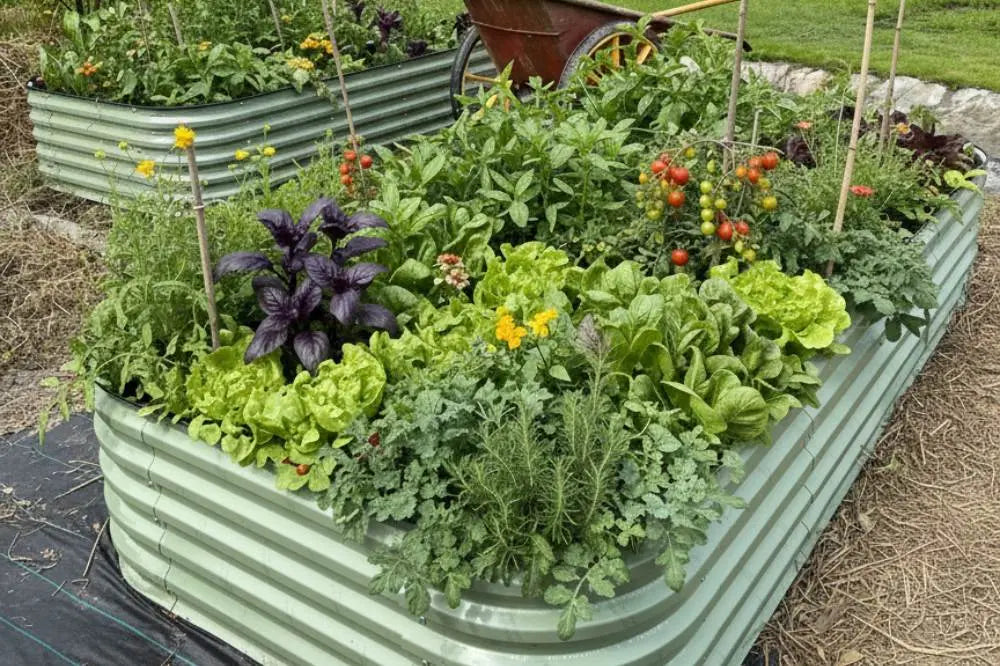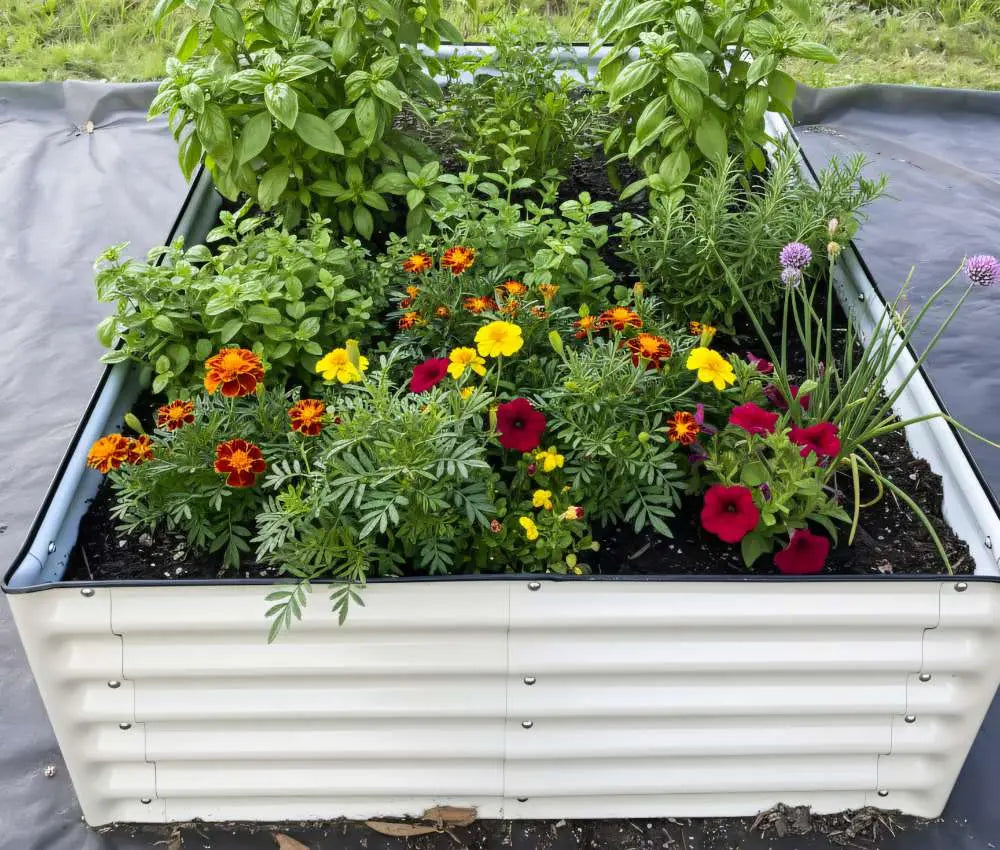How To Grow Vegetables Indoors In Winter
By Vidura Randeepa
Author bio: Vidura Randeepa is passionate about vegetable gardening and grows tons of flowers, herbs, and fruits. She is the writer of Life and Agri, where she writes articles on gardening (indoors), landscaping, horticulture, organic gardening, fertilizer, pests, and diseases.
When it comes to growing vegetables in the winter, your options are limited. Growing vegetables indoors is a great way and the best thing to keep your fresh vegetable gardens going especially during the winter season, but it can require a different a different strategy than if you were to grow them outside in the warmer months of spring and summer. What you'll need to start a vegetable garden indoors.

Potting Soil
Potting soil, commonly referred to as potting mix, is made up of many nutrients that give potted plants a healthy environment in which to grow. The purpose of these mixtures is to prevent the soil from becoming overly compacted, which can suffocate roots and obstruct the movement of water and nutrients. A high-quality potting mix will be fluffier, lighter in weight, and able to retain moisture. Both more specialized mixtures and all-purpose blends come in a wide variety of varieties.
Containers
You can grow vegetables inside using nearly anything if your containers have drainage holes. Terra cotta pots, plastic pots, wooden planters, and window boxes are a few typical container choices.
Fertilizer
Throughout the growing season, organic liquid or granular fertilizers are beneficial for vegetables grown inside. It serves as an organic fertilizer, supplying essential micronutrients and growth factors that promote root development, lessen plant stress, improve plant resistance to pests and diseases, and boost yields. Consider it as giving your plants a head start and improving their defenses.
Light
Most veggies require at least 6 hours of direct sunlight to grow, but the more light you can provide, the quicker and more abundantly they will produce. Your first step to successful indoor gardening is understanding the basics of light levels and how various plants respond to light. Additionally, lamps must produce a proper amount of light for the kind of plant you are growing. Ignore the store lights. Your best option is to get high-quality, energy-efficient grow bulbs that produce more light and less heat. They are now a viable option for producing seedlings, leafy greens, herbs, and tiny fruits indoors thanks to advancements in LED grow lamp technology.
Temperature
Vegetables thrive best in rooms that are consistently between 65°F and 75°F, as long as they aren't too drafty. Avoid placing your plants near heaters, fireplaces, and other heat sources as they can dry them out.
Air circulation
By reinforcing their stems, plants grow stronger thanks to good air circulation, which also helps keep mildew and fungi at bay. Pollination is assisted by appropriate air movement with fruit-bearing plants (even with self-fertile plants like tomatoes, which typically require insects buzzing around or soft breezes blowing to pollinate their blooms). Run a basic household fan (such as a box fan or an oscillating desk fan) nearby your plants for a few hours each day at low speed. (You can set a timer for it to run entirely automatically.)
Best Vegetables to grow indoors in winter
1. Tomatoes
One of the veggies that can be effectively grown indoors in the winter is the tomato. To guarantee proper airflow when growing tomatoes inside, you should use unglazed pots. Before sowing the tomatoes, make sure the pots have excellent drainage. The seeds should be sown in the garden soil at a depth of about 1/4 inch and the pots should be around six inches deep. Toy Boy, Tiny Tim, Florida Petite, and Red Robin are a few types that may be grown inside.
2. Cucumbers
Another vegetable you may grow inside is cucumbers. Cucumber seeds made specifically for indoor growing are easily available. Compared to garden varieties of cucumber seeds, they can be more expensive, but you'll get superior results. Cucumbers require a lot of direct sunlight and temperatures between 73 and 79 °F when it comes to the environment. For best effects, be mindful to maintain a lower temperature at night.
3. Lettuce
If you enjoy salads, growing lettuce indoors this winter is a must. There are many different types of lettuce, and some of them are more suited to indoor growing than others. You should pick your preferred variety. The main requirement is a depth of at least four inches when planting lettuce in any kind of pot or container. The pot needs to be in full sunlight. Invest in a fluorescent bulb to promote growth.
4. Swiss chard
Even less work is required to grow Swiss chard indoors. Even after being placed outside throughout the summer, it has been growing for more than eight months. Swiss chard seeds should be soaked in a glass of warm water overnight before planting for indoor planting. Sow many seeds at least a few inches apart in a pot that is at least eight inches wide and has soil and fertilizer mixed in it. Turn on the lights when the first real leaves develop, moisten the soil, and water it frequently.
5. Kale
Similar to lettuce, leafy vegetables, or vegetables with broad leaves, kale is similarly simple to plant and can tolerate freezing temperatures. They can be grown in the same manner as lettuce. However, you must allow them plenty of room; therefore, set them apart further because they require more space to expand. You can grow mustard greens or swiss chard if you don't like kale because it might be an acquired taste.
6. Carrots
Since they don't need as much light as fruiting vegetables to generate a strong crop, carrots and most other root vegetables grow well when grown inside. Choose a deep pot and fill it with potting soil before planting your carrots in it. Wait for the carrot seeds to sprout after planting them on the ground. So that you don't have to wait a few extra weeks to harvest, light helps plants grow more quickly. I prefer types that are shorter, thicker, and require less depth. Any type can be grown as long as the container is deep enough or the carrots are harvested when they are still young.
7. Peppers
In potting soil, peppers grow. Just sow one or two seeds in a pot, and make sure the growing medium is kept moist but not wet. To keep them growing, place the containers in a south-facing window or add more light.
8. Culinary Herbs
In the winter, herbs like basil, lemon balm, cilantro, thyme, and rosemary will grow nicely indoors. They can also grow in little pots beside the window in your kitchen. They don't need much sunlight.
9. Cherry Tomatoes
Although they require 16 hours of artificial light each day and temperatures that do not drop below 65F, these grow more quickly than regular tomatoes (18C). Chili peppers grow under these same conditions.
10. Spring onions
Without grow lights, spring onions can be grown inside. They don't require a lot of space either. After the annuals die in the fall, you can plant them in any extra pots you may have. Just be sure to give the pots a good cleaning and replace the soil before placing them. Did you realize it? After you've eaten the green top of a spring onion, transplant the surviving root end to grow new ones.


